Shinko 505 Hybrid Cheater
Company: Shinko
Price: $89.95-$102.95
- Soft sticky rubber on a knobby tread tire.
- The durability is way better than expected.
- Dry conditions grip is really good.
- The tire and its carcass wallow feel are very pressure dependent.
- It's rubber compound isn't the best in wet slippery conditions.
- A little on the heavy side.
What it is
- A knobby tire with a trials-type rubber compound.
Shinko’s Hybrid Hard Enduro / Extreme single track trail tire is claimed to find traction in the most extreme conditions. Made from a soft sticky rubber compound just like Shinko’s Trail Pro trials tire but with a knobby tread pattern to work in a wider variety of soil conditions. This tread pattern is meant to make up where a trials tire can fall short in braking and loose soil conditions. It is available in popular 18" and 19" rear wheel sizes.
How it works
- Great in dry conditions, especially a baked motocross track or trail.
- The tire can roll on the sidewall or become bouncy with too little air pressure.
- It does not tear and shred as easily as some of the other extreme enduro tires.
We put the Shinko through a wide range of test conditions at the request of the importer who suggested we didn’t just take it out and abuse it just the extreme enduro stuff. They really wanted us to take it all the way to the track and are glad we did. This is a pretty surprising tire and we learned a lot at the same time.
The 505 Cheater isn’t light, at 15.8 pounds for the 120/100-18” it is about 3-4 pounds heavier than most high-end MX tires and even a bit heavier than some of the Desert or AT tires out there. It mounts pretty easy and has a solid bead engagement on the rim. The sidewall is on the softer side for stiffness. The knob size and cut is more of a hardpack tread design and the tire appears to be non-directional in tread design but there is a direction arrow on the sidewall. The rubber compound is very soft to the touch just a little stiffer than a true trials tire with knobs that are easy to stretch and twist around with your finger.
We tested two different sizes, both 18-inch. We ran the smaller 110/100-18 on a KTM 200 and the larger 120/100-18 on a Yamaha YZ450FX. The tires have, for the most part, a similarly familiar feel to most soft sidewalled tires in that they will wallow side-to-side when the pressure isn’t in the higher ranges. We ran anywhere from 7 PSI all the way to 20 PSI in them. Wallowing is minimized at 14 PSI for most riders but most, especially heavier riders needed just a more pressure. This didn’t bother us too much in the gnarly enduro trails, in fact that same softness really helped the rear suspension compliance on the Yamaha FX. But if you start riding faster and pushing the bike it can get a little mysterious where the rear will rebound in a hard impact or G-out. If you go too stiff in pressure the tire will bounce as well, there is a sweet spot for sure. You have to play with different pressures depending on the speed you want to ride more than anything. We did not test the 19-inch rim sizes but we suspect the wallow would be much less and therefore track and harder riding performance would suffer less from this character.
As for the traction, the tire is pretty impressive. It’s sticky compound really shines on hardpack or dry and desert-like conditions especially on loose rock or slickrock. Like a trials tire it rewards a rider that is a little careful with the spinning but it lets you get away with way more spinning than a trials tire ever will. It also has a warming character if you are on rock where a little spin or burnout will warm the tire and make the rubber more sticky for a good launch. On this type of surface is’t much more noticeable than other tires. Think rock faces or concrete starting pads.
In the beginning the tire had good braking performance. It is way better than a trials tire as it resists total loss of traction in a skid, it has bite. What surprised us was that the breaking grab in skidding went away before the forward or acceleration grip started to go as the tire wore out. In fact, when the tire appears to be ⅓ of the way worn, it still continues to have really good forward bite but sensitive riders felt a loss in the braking side. And forward traction stays way better than you’d think, especially on dry and hard surfaces till the knobs are nearly half-way gone.
The wet is where we had some issues. In mud it just comes down to the tread pattern and the mostly close blocks, they spin up easy and keep spinning as the rubber compound, unlike a real trials tire, does not help things even on wet rocks or roots. But tire pressure can help here as the soft carcass lets the tire collapse and stick and grab things when needed. But overall it isn’t any worse than any other hardpack tire in wet or muddy conditions.
Where the 505 performed best was for general trail riding at 10-14 PSI in dry conditions. It has some trials tire stick on the rocks but also enough spacing to allow aggressive throttle in loose or sandy conditions, something a trials tire will not tolerate. Then on a moto track that was dry and baked, the 505 could handle the blue groove and help paint the baked dirt that color. All the while lasting much longer than a more expensive hard-track specific tire. It was praised by most of our riders for its bite in the turns on the side of the tire. It did not want to climb out of ruts and sliding was predictable. But in chop or bumpy conditions it has a different feel that bothered some riders.
Even in low pressure riding, never had any flats. And as heavy as the tire was we did not feel the weight as much as we thought we would. The durability of the Hybrid Cheater is a little less than a trials tire and longer than a standard MX tire. It does a really good job of resisting chunking until you get it into really sharp rocks and even there is holds up well in comparison to most. The last part of it’s life seems to take forever, the time when a tire looks roached but it still works too good to take it off. We also suggest the larger of the tires for any track use as the smaller sizes are pretty small and the knob block size is reduced. The smaller tire's knobs felt like they squirmed around more--better for the trail, not so good for the track.
We know trials tires are not for everyone, especially riders who have a hard time not spinning the rear wheel. But this tire seems custom made for that slightly more aggressive rider as it will not penalize you for spinning as bad. The 505 will stick longer before spinning and then catch sooner when spinning. All you have to do is learn your proper air pressure.
Leave a Reply
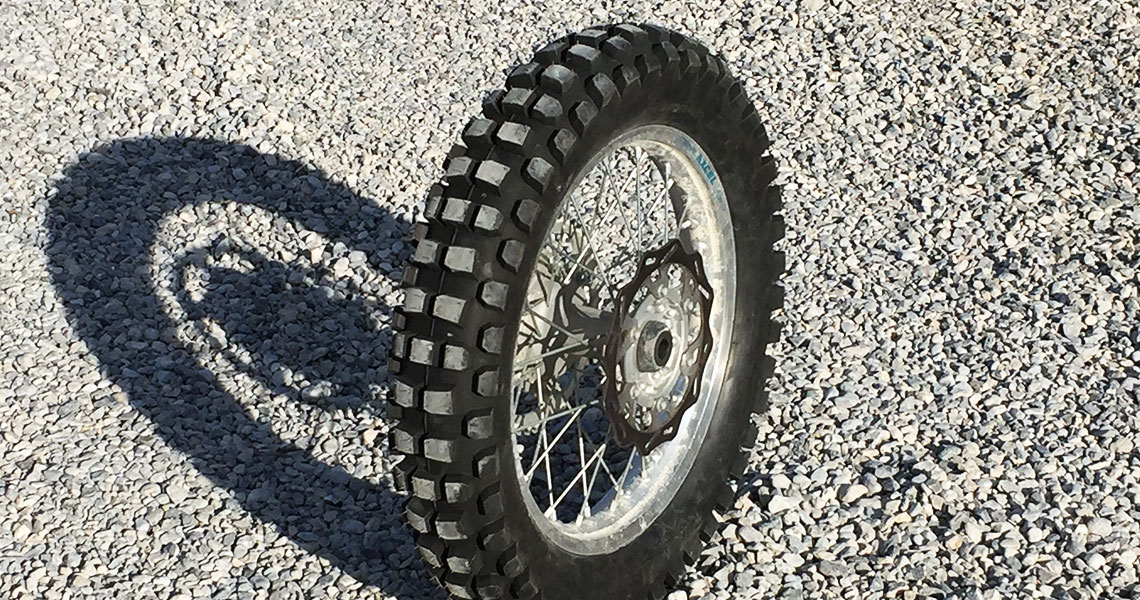
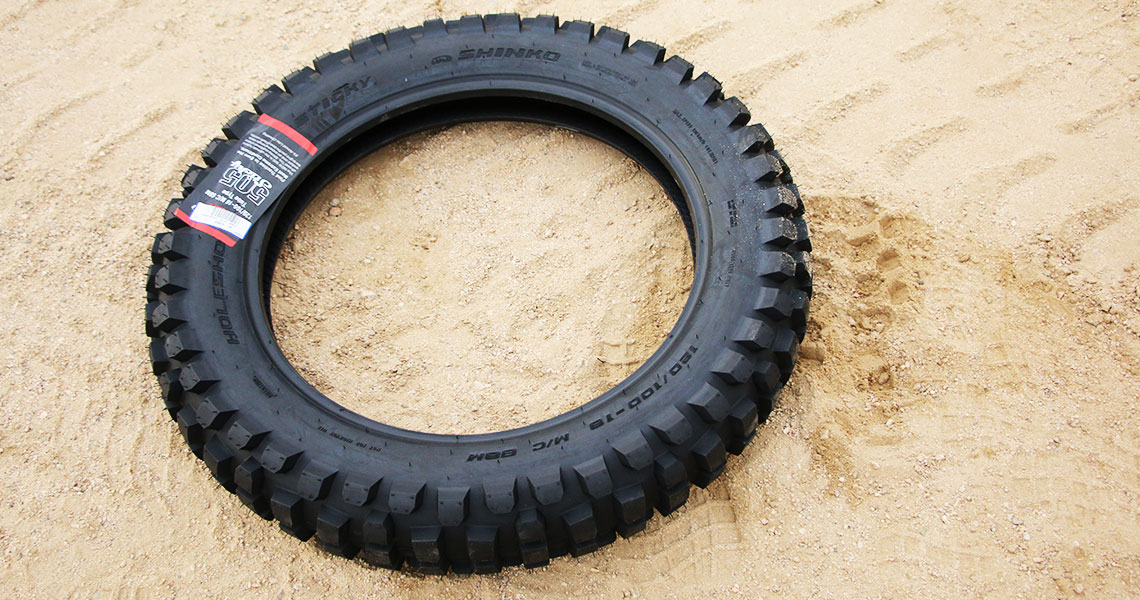

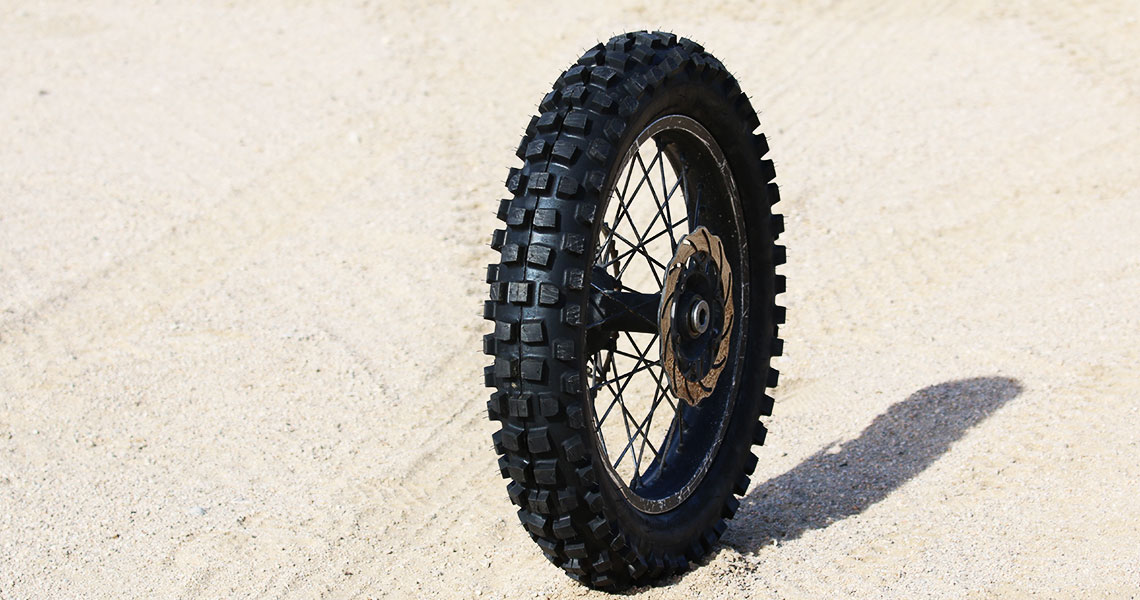



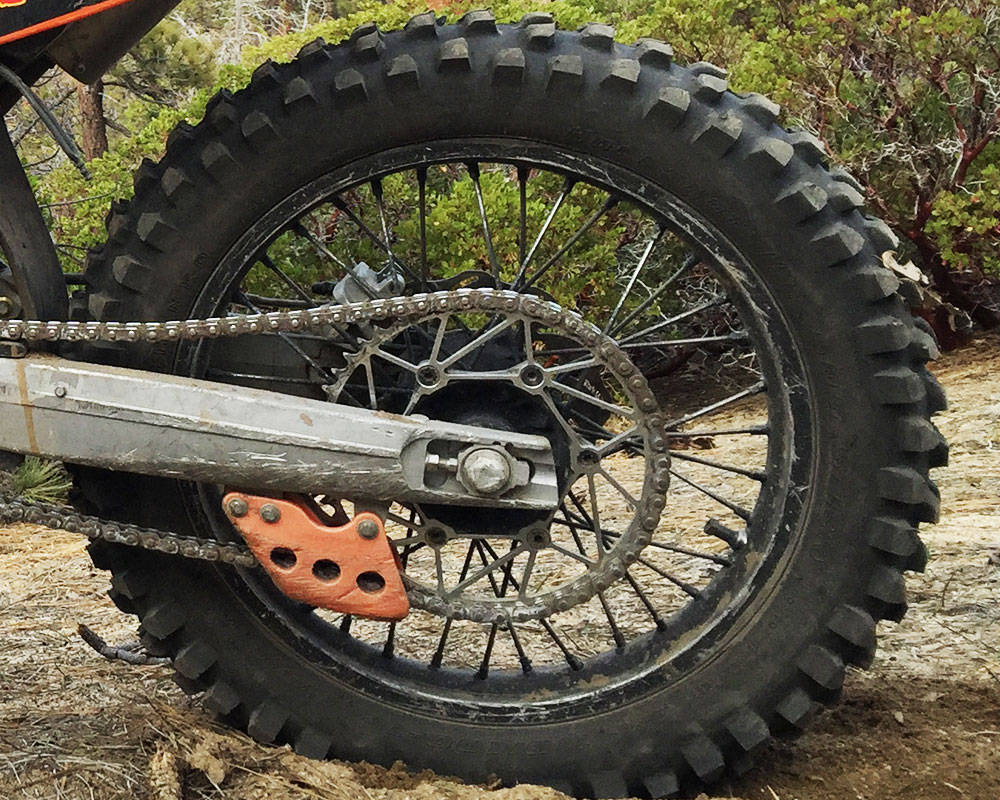
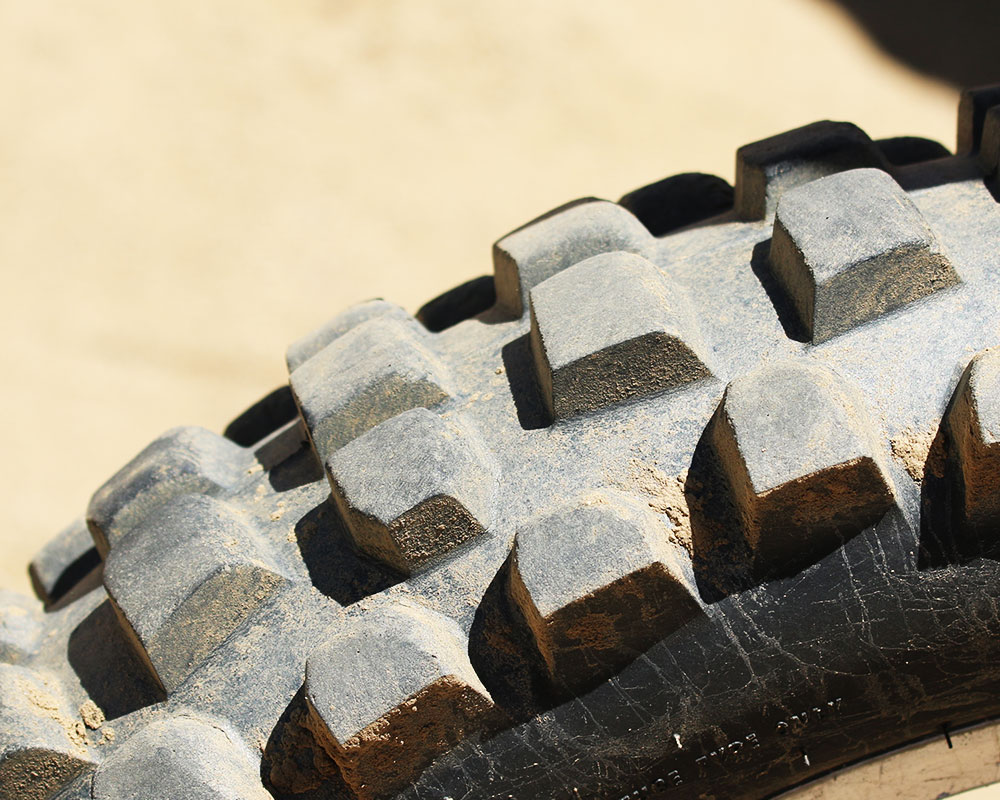
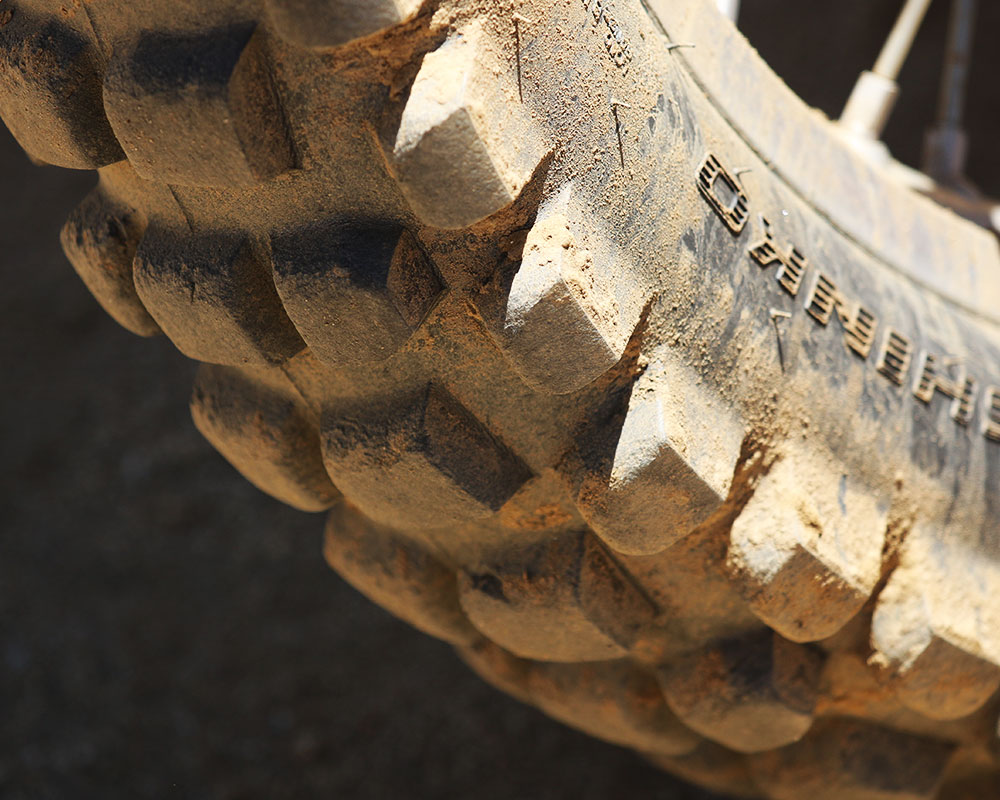

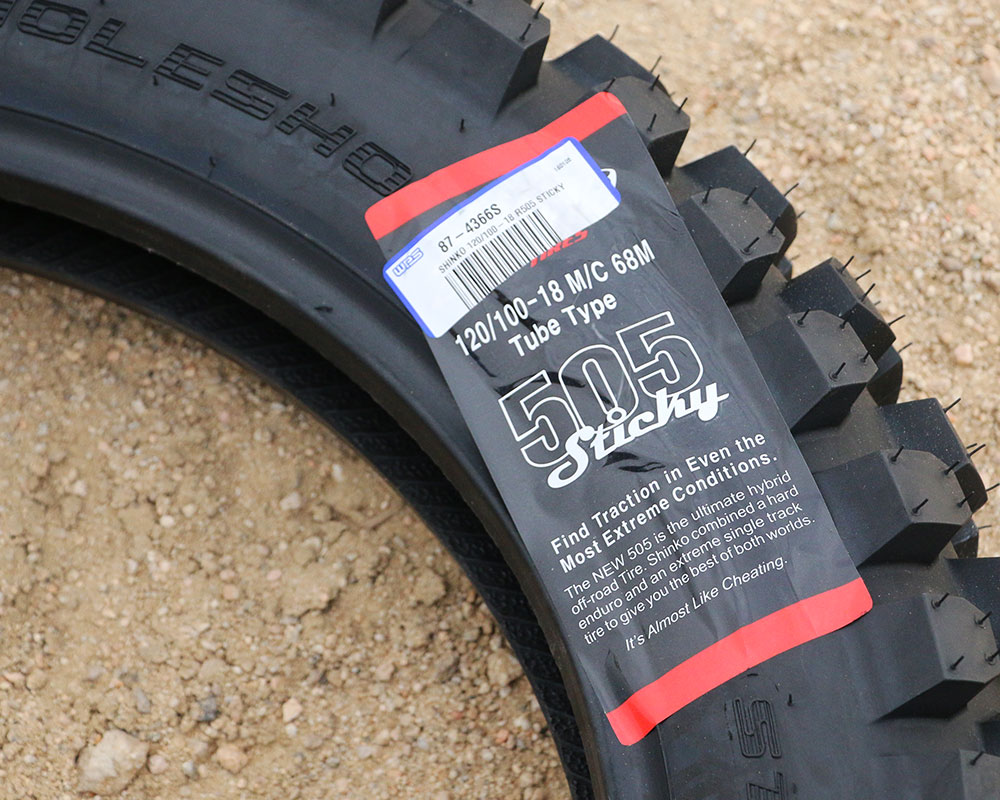

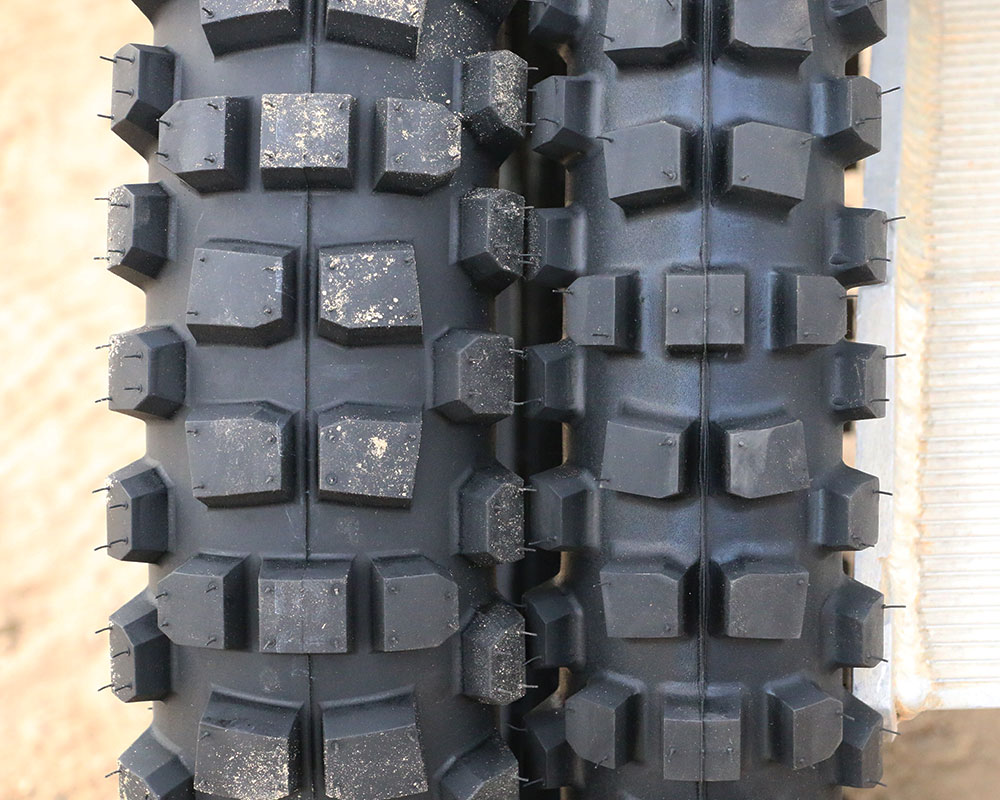

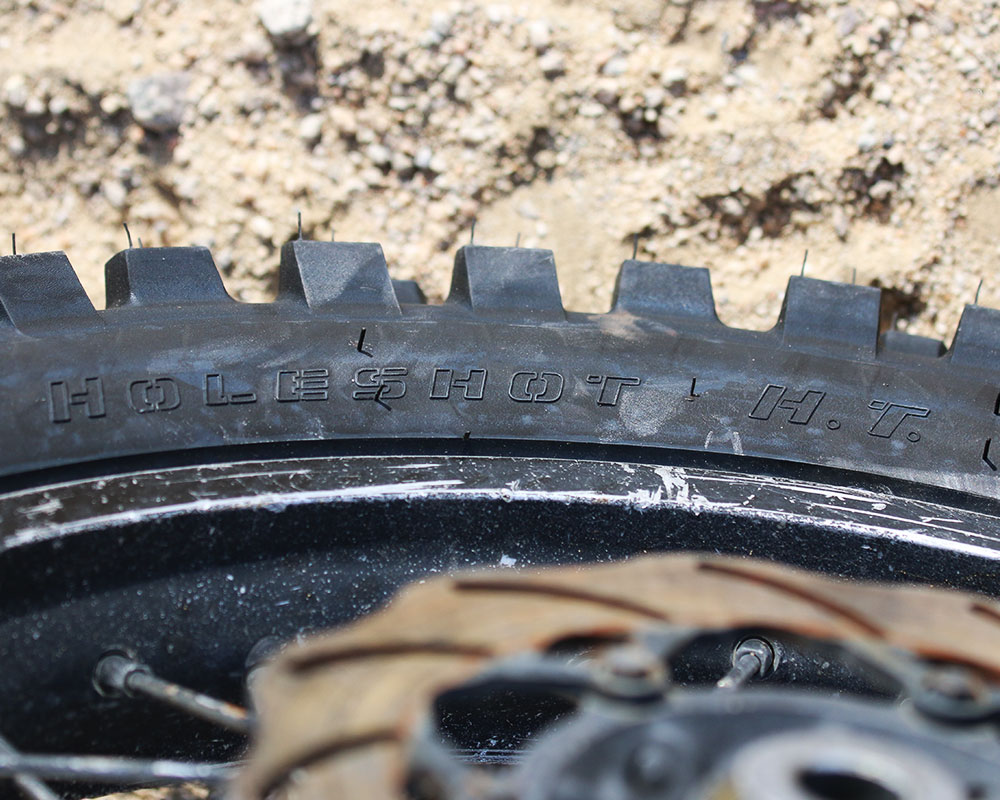
10 Responses to “Shinko 505 Hybrid Cheater”
Paul Threlkeld
How do you think this tire stacks up against the kenda equilibrium? I’ve been using the kenda on my 500 exc and I really like it in Tecate single track but it does suffer in deep sand climbs. This tire looks like it might be better for that.
Jimmy Lewis
Anty time you are spinning the open spacing is an advantage. They are quite similar in carcass feel.
Jimmy Lewis
Very similar. Better on loose surfaces or for a rider who spins a lot.
Jim Cook
Thank you for the tire review. I respect your opinion.
The part which bothers me about the tire review was:
“The wet is where we had some issues. In mud it just comes down to the tread pattern and the mostly close blocks, they spin up easy and keep spinning as the rubber compound, unlike a real trials tire, does not help things even on wet rocks or roots. ”
I get what you said about the trials tire, but on wet rocks and roots, how does it compare to a good intermediate full knobby competition tire; such as a new M-12 Michelin or a MT-16 Pirelli (or any other knobby of your choice that is competent in “wet rocks and roots” conditions.)?
Jimmy Lewis
Simply, if you spin an open block tread will work better.
Jimmy Lewis
It will work just fine with Tubliss except our experience with softer side-walled tires (like the Kenda Equilibrium) is that they wallow too much when at low pressures that the Tubliss will allow.
Colin Kaiser
What psi would you recommend?
slavy Ivanov
I have this tire currently and can’t wait to change it. I will NOT buy it again.
I am almost 55 y/o . 5’4″ , and ride CRF230F /less than 20 hp / in Az. I have TUBLISS and keep trying ti find the perfect pressure for this tire. It seems to be around 8 – 10 PSI. And still this tire can not match MT 43. The side wall is soft and there is mushy feeling if you drop the pressure. If you increase it- you start bouncing off the rocks.
The cheater is directional tire so you are not supposed to flip it when the front edge of the knob wears / consider 6 rides/ . After only 6 rides the knobs looked like saw teeth. I flipped the tire and kept riding. I have 7 rides and i have may be 1-2 more rides left – so it comes to around 8 $/ ride in rear tire.
Overall – Bad tire for AZ. MT43 beats it everywhere except in snow and in down hill braking.
May be under different conditions the tire will perform better , but here even SEDONA 907 performs better.
Jimmy Lewis
Add a link to the chain. The tires are pretty different between the sizes in more ways that just the size, even the knob spacing and sizind was altered when we tested them.
Jim Meyer
This test missed the boat not using Tubliss. The heavy soft tire is a perfect fit with Tubliss. The tire grips yet resist punctures and pinch flats at 6PSI. I run the big 120 on a 300 XCW and at 6 PSI the tire is still very stable and never bottoms out with the big sidewall. I’ve heard guys run 4 PSI and believe it’s possible if you’re on extreme trails and not moving as fast. Once you add in the price, this tire is a no-brainer!